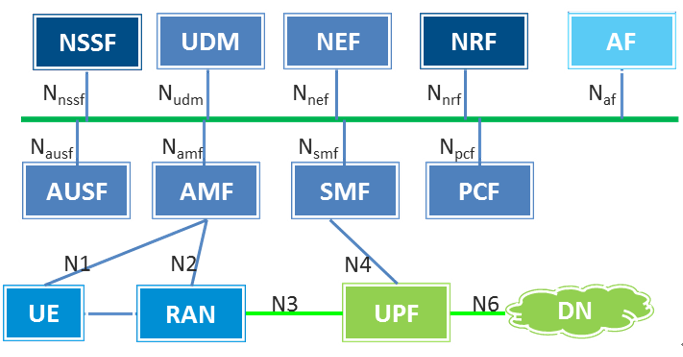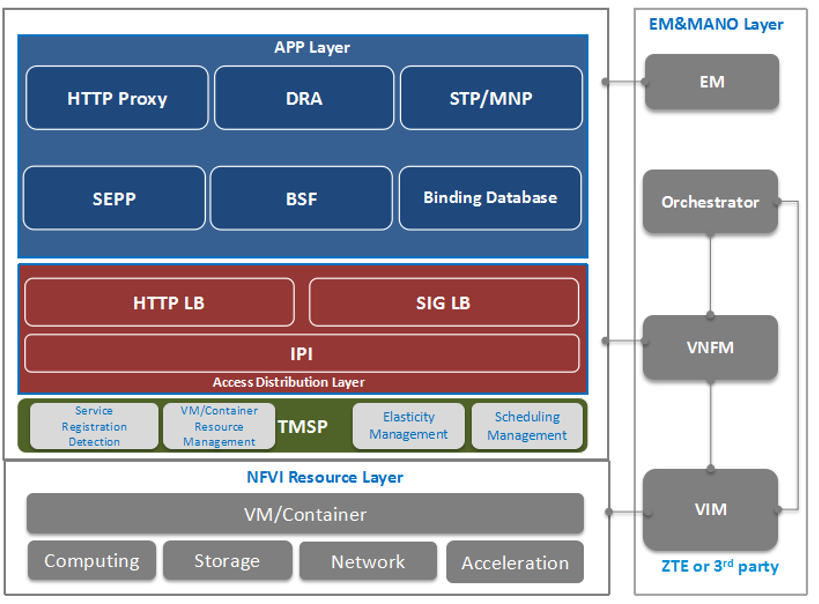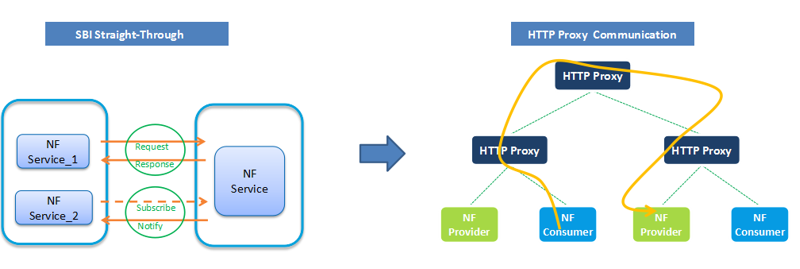Background and Basic Demands of 5G Signaling Network
With the rapid development of mobile communications, people's life has been greatly facilitated. Mobile networks have become indispensable elements of daily life just like electricity and water. No matter whether you want or not, 5G has come. Different from the 2G/3G/4G network that focuses on human-network communication, 5G will be a network supporting all scenarios, all industries, multiple slices, wide applications, and massive connections. Therefore, signaling interaction of 5G network and other networks will inevitably spurt out. How to provide a simple, efficient and sustainable 5G signaling network has been the important subject of major communications standard organizations.
The diversification of 5G services and function requirements brings about complex signaling connections. Therefore, 5GC must be capable of simplifying O&M and enabling intelligence to help 5G operators simplify network deployment and meet huge operational challenges. As is known to all, the traditional 2G/3G/4G signaling network adopts SS7 and Diameter protocols. In the 3GPP R15 5G standard, network functional entities are based on the network service architecture (SBA), and communicates with each other via HTTP in a straight-through networking mode, as shown in the following figure. In the case of multiple network functions (NF) with full service accessing, the 5GC have to be compatible with the traditional signaling network, simplify network deployment and improve O&M efficiency. As a key technology of 5G voice solutions, the 5G signaling network has attracted more and more attention in the industry on how to smoothly and efficiently solve voice continuity problems between 4G and 5G.

Figure 1 Interfaces of HTTP-Based 5G SBA
ZTE Converged 5G Signaling Network Solution
As a mainstream supplier in the telecommunications industry, ZTE has deep understanding of network design, construction, and operation, and years of experience in telecom network design. Therefore, by collaborating with mainstream operators, ZTE takes the lead in proposing the innovative, convergent, efficient, and intelligent 5G signaling netowrk solution.

Figure 2 Architecture of ZTE 5G Signaling Network
Based on the generic standard ETSI NFV hierarchical architecture, ZTE's 5G signaling network adopts the unified and open NFVI resource platform and MANO layer, and supports 2G/3G/4G/5G/Fixed signaling processing capability . Its advantages are summarized as follows:
1. Innovative HTTP Proxy Solution Based on Cloud Native Architecture
1) Industry-leading 5G technologies, such as cloud native micro-service components, lightweight containers, and stateless design
Based on lightweight containers, stateless design, and other new technologies, Cloud Native architecture is the best platform for network slices supporting 5G multi-service scenarios. Cloud Native technology can fully improve the flexibility and development efficiency of 5G services, helping the system achieve second-level scaling and rapid deployment, and enhancing capabilities of quick introduction, openness and innovation of 5G services, to facilitate operators' cloud transformation. The ETSI standard architecture provides a unified API to improve developer experience and create a new operation mode.
2) HTTP Proxy solution to solve the complex communication problem of 5G SBI
The HTTP-based NF straight-through connection mode has great limitations in 5G scenarios, for example, it is not applicable to efficient interworking of multiple NFs among multiple slices, large-scale networking, or roaming interworking. Using the STP/DRA principle from the traditional communication network as the reference, ZTE works with mainstream operators to propose the innovative HTTP Proxy solution to solve the complex communication problem of HTTP in 5G scenarios.

Figure 3 SBI Straight-through Mode and HTTP Proxy Mode
Serving as the HTTP communication aggregation processing module, HTTP Proxy is directly embedded within the 5G signaling network framework, and is responsible for forwarding messages between the HTTP client (NF consumer) and the HTTP server (NF provider), to provide a unified channel and bridge for the direct or indirect communication between different NFs.
According to ZTE's actual verification and deployment, the HTTP Proxy solution has proved to have outstanding advantages, including that it can significantly reduce the number of network-wide and single-NF signaling links and simplify the workload of network deployment and maintenance. It is applicable to large-scale networking and different routing scenario by supporting flexible HTTP routing mechanism. It can operate in egress, reverse, route and other proxy modes.
The HTTP Proxy solution proposed by ZTE also features simplified number segment management, online signaling editing and precise charging, meeting flexible and changeable service scenarios of 5G.
2. Fully converged signaling network supporting full access processing
ZTE's unified 5G signaling network solution supports the converged deployment of multiple applications on one VM, and supports converged processing and mutual conversion of different signaling messages such as SS7, Diameter, and HTTP. This solution also supports BSF and SEPP, to easily implement unified policy control and secure communication connection, signaling filtering and topology hiding between different PLMNs. In terms of architecture, the advanced telecom micro-service platform is adopted to achieve three major conversions of database, policy and control plane, providing a solid foundation for the full integration of signaling, so that operators can flexibly deploy the network in a hierarchical or centralized manner to meet the large-scale commercial requirements of 5G.

Figure 5 Convergence of SEPP and BSF
3. All-Round security assurance, efficient and reliable
To guarantee reliability and efficiency, ZTE unified 5G signaling network is based on stateless load sharing, linear performance extension, and multi-level disaster recovery technologies, implements signaling access distribution, layered service processing and on-demand expansion to improve system resource utilization. The flat protocol stack API is directly invoked to meet the efficient processing requirement of 5G signaling.
4. Automated intelligent O&M
ZTE 5G signaling network solution, combined with the CloudStudio intelligent O&M system, implements such capabilities as automatic design, automatic deployment, automatic provisioning, automatic test, automatic polling, automatic attendance and gray upgrade, helping the operator build a new 5G network from central DC to edge DC, from underlying hardware to service orchestration, and from NE to service.
Conclusion
ZTE is fully prepared for end-to-end 5G commercialization by implementing continuous strategic focus on operators. ZTE’s unified 5G signaling network, which is innovative, integrated, efficient and intelligent, will help operators to realize the full access capability of 2G/3G/4G/5G. This single network is multi-functional, thus simplifying the network topology, and reducing interoperation and signaling interaction crossing network functions. It simplifies the deployment and interoperation of the 5G core network and paves the way for 5G evolution, helping operators gain dual-leading technology and time in the coming 5G construction, and enabling end users to enjoy the benefits brought by 5G technologies in advance.
ZTE Common Edge enables 5G network
Intelligent Penetration Test Boosts 5G Security
What Voice Solutions and Applications are Needed in the 5G Era?
ZTE Full-Scene UPF, Simplified and On-Demand
Build new IP interworking gateway offices to promote the deployment of IMS in all networks
5G Standards are Becoming Mature with Smooth Development of R16 and R17
Flexible and Highly-efficient MEC Distribution Solution Enables Industry Customers to Customize a Private Virtualized Mobile Network
ZTE Promotes the Performance and Efficiency of Servers and Storage to Help Enterprises Dig Deeper into Data Value
5G Operations Get Smarter When AI and Slicing Combine
Virtualized User Plane I/O Performance Acceleration Technology Boosts 5G Network

